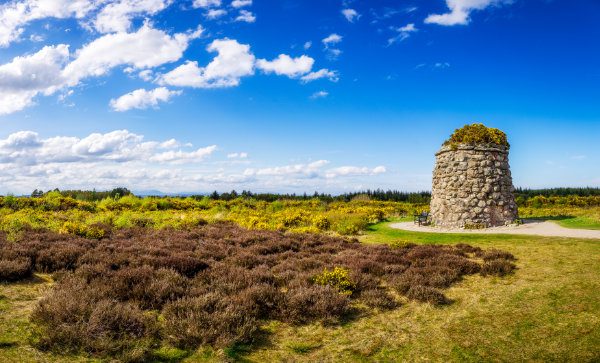The Jacobites

The Effect of the ’45 Rebellion on the Highland Clans
Charles Edward Stuart, known as Bonnie Prince Charlie or the Young Pretender, was born in 1720.
He was the grandson of King James VII of Scotland and II of England, and he believed – along with his Jacobite followers – that the British throne was his birthright.
In 1745 the Prince sailed from France and raised his flag at Glenfinnan, in the West Highlands.
He was hoping to raise an army and overthrow King George II.
Many Highland clans supported him but others opposed him, siding with the Hanoverian monarch.
Most Lowland Scots and English people were against him and he didn’t get much support from English Jacobites.
After an eight-month campaign, the Hanoverian army under the Duke of Cumberland – the son of King George II – wiped out what was left of the Jacobite army at the Battle of Culloden.
Charles Edward Stuart had ignored the advice of his more experienced commanders.
Charles Edward Stuart fled from the battlefield on Drumossie Moor, escaped from Scotland and returned to France.
He lived out the remainder of his life in exile.
Since the 1746 Rebellion failed, the Stuarts did not regain the throne and things began to change for the Highland communities and clans.
The King of England ordered that all supporters of the Jacobite cause were to be killed. This included many of the clans in the Scottish Highlands.
This was followed by the notorious Highland Clearances when those who were left of the clans were forced to go to the sea coast, the Lowlands or abroad.



After the Battle of Culloden
The Highland way of life grew worse after the Battle of Culloden.
The British government imposed laws which limited the power of the clan chiefs and restricted the Gaelic culture which Highlanders enjoyed.
This included the banning of clan tartans and bagpipe music.
The government also made it possible for outsiders to get much of the land in the Highlands.

The new landlords began to replace the traditional runrig system with agricultural methods used in the Lowlands.
Families were put out of their homes and into the surrounding countryside or to the coast.
There they were offered tenancies in new crofting communities, and new job opportunities in the fishing, quarrying and kelp industries.
Families had no legal claim to the land on which they lived.


Instead, a feudal arrangement was in place meaning that land was given to them in exchange for service or labour.
Their new way of life was so different that crofters found it increasingly difficult to grow crops and raise livestock for their own use.
There were too many people in the Highlands and this put pressure on land and jobs.
New farming methods and equipment totally changed farming and greatly reduced the number of men and the time needed to manage a crop.
Since they could no longer make a living in the Highlands, many chose to emigrate, tempted by shipping agents who promised a better life in the United States of America.

